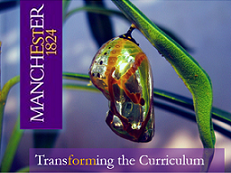Practicing The Sustainable Utilization Of Energy In Physics Classes Of Chinese Secondary Schools
When I was a junior high school student, I really had no interest in the ‘mysterious symbols and formulas’ taught in physics classes. This led me to graduate from high school and after many years of physics I only had the memory about the names of Einstein and Newton. Actually, I think that even people who are totally not interested in numbers and formulas need to get something useful for their future in junior high school physics classes.
Some facts like the shortage of Chinese natural resources and how to deal with this threat, are supposed to be accepted by everyone, because it is closely related to our life and future. According to the statistics, China has a vast territory, diverse geological conditions, rich mineral resources, and 171 minerals. There are 157 proven reserves. The reserves, like coal, iron and lead, all rank among the top in the world.
Other natural resources such as land, water, forests, animals and plants are among the world most advanced, both in species and in quantity. However, because of the huge population, China is still a country with a serious shortage of natural resources. The economists for PNC Financial Services Group Damien Ma and William Adams said in an interview that once the huge resource storage is divided by the total population, it immediately becomes insignificant (2013).
In addition, the use of non-renewable resources in China is very high, the development of clean energy is insufficient, which because that there is a lack of technology. In addition, the use of non-renewable resources in China is very high, the development of clean energy is insufficient, and there is a lack of technology.
The following picture shows this very clearly. The following icon shows this very clearly. Under such an urgent situation, those children who live in the city and have clean drinking water by turning their taps on are still living a ‘profligate’ and comfortable life. After all, the difficult days of “not having a bath for a week” are too far away from them.

How to embed the concept of sustainable development deeper into the students’ minds than to deal with examinations is a profound problem. As a subject closely related to environmental issues, the physics curriculum must assume the task of developing students’ awareness of environmental protection, especially basic junior high school physics.
In China, the physics teaching in basic education stage faces such a problem: The physical knowledge taught by schools is filled with difficult theories and it has nothing to do with real life. Students cannot understand or want to learn. This is the same as in the physics classes in many countries. Students do not want to study any physics because they think that this knowledge is completely useless for their future career and life (Garwin and Ramsier, 2003).
In the stage of elementary education, it is important for teachers to help students establish a sustainability worldview. The writer Victor Nolet considers that engaging learners in meaningful activities and making explicit connections to students’ prior knowledge can help them test and apply the learned knowledge smoothly in practical situations (Nolet, 2015). Other researchers agree with this point in the study of physics teaching.
They believe that to make physics useful has to be focused on the flexibility, individualization and socialization of the teaching process. It is necessary to help students acquire physics common sense and transferable skills so that students can recognize the knowledge gained in different areas of the classroom and life (Juceviciene and Karenauskaite, 2004). In summary, it is equally important to ‘obtain formulas and digital knowledge’ as well as ‘make it into personal value and put it into practice’.
How to apply it in the practice of physics teaching? Many teachers have become accustomed to the teaching mode of teaching the formula for the test problems. Changing the concept is not an easy task. In addition to the teacher’s ideas, in China, a single exam-oriented education model is a huge obstacle. It may take top-down changes to succeed. Change can begin with a small manual class.
some activities are like this video shows. It is important to note that students should not think that this is just a small time for relaxation in a busy classroom. They need to be treated as seriously as if they were taking serious tests. In fact, I personally believe that the long-term task of working with families is also very suitable for children of this age. For example, students can gradually participate in the management of household electric meters and kitchen gas equipment, learn how electricity meters and gas are safe to use and calculate for bill as well as carefully observe how some resources are arbitrarily wasted in family life. Children may be very unwilling to perform even at the beginning, but they will always become personal habits in the long run. For those students who do not want to use physics as a career in the future, these common senses and energy-saving habits that people will be learned in the adult’s life will be maintained for a long time.
References:
- Garwin, M.R. and Ramsier, R.D. (2003). Experiental learning at the university level: a US case study. Education+ Training. 45(5), pp.280-285.
- Nolet, V. (2015). Educating for sustainability: Principles and practices for teachers. Routledge.
- Juceviciene, P., & Karenauskaite, V. (2004). Learning environment in Physics: the context of double paradigm shift.
Article links:
https://www.bloomberg.com/news/articles/2013-10-07/how-resource-scarcity-constrains-china

